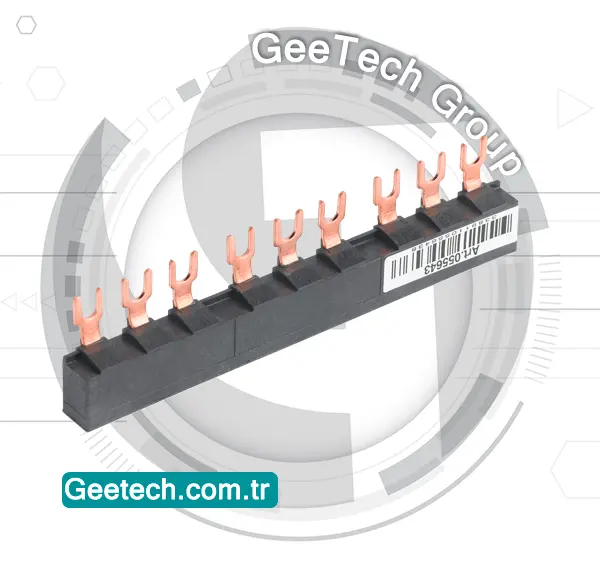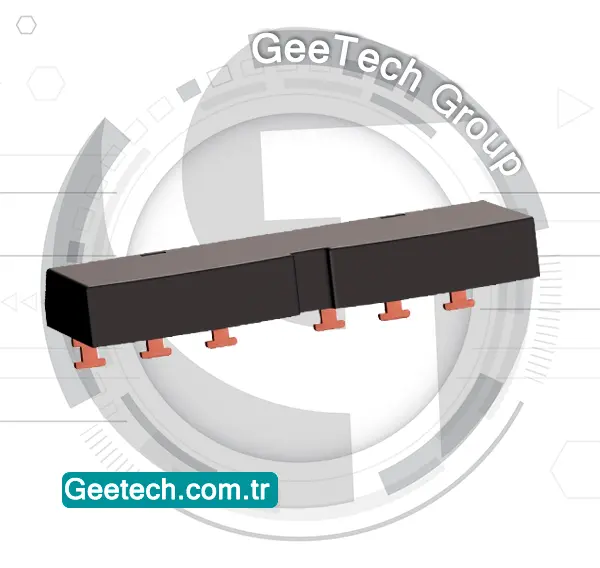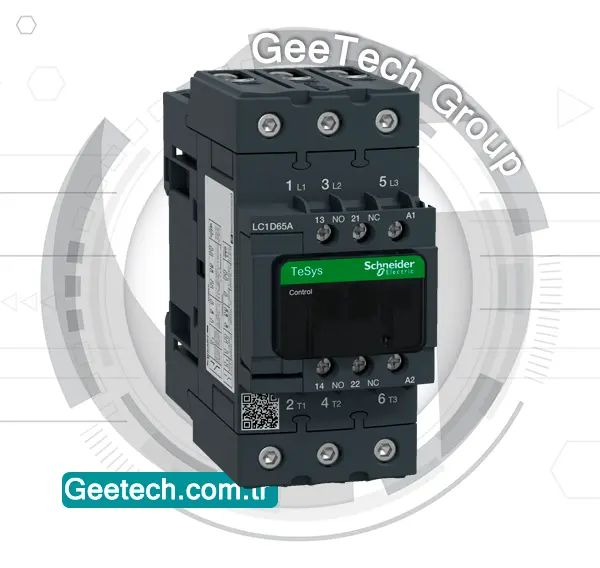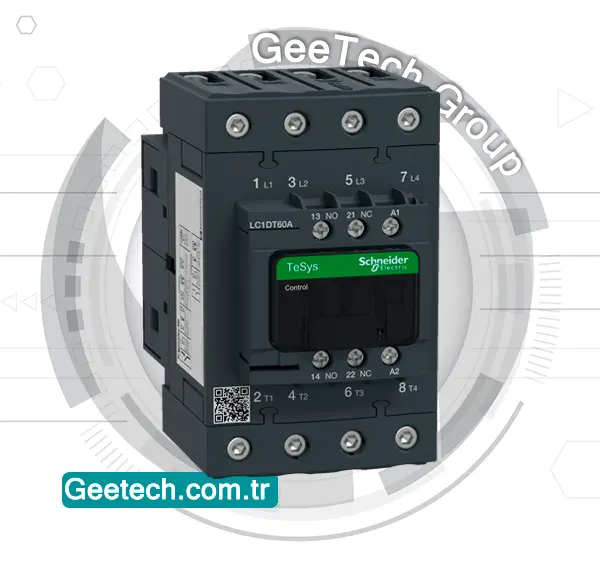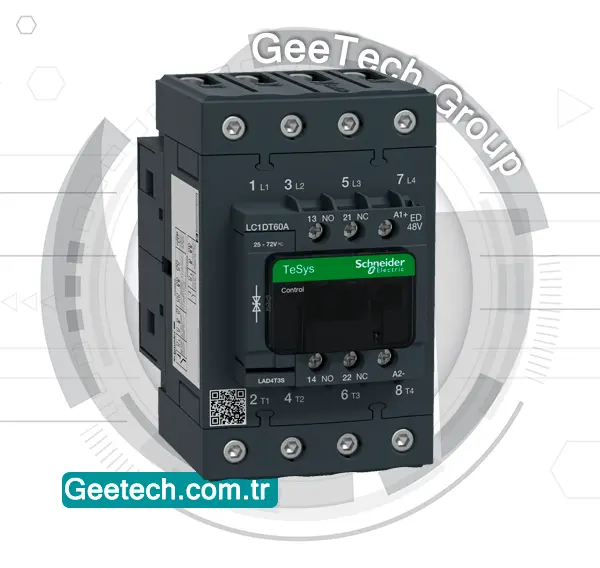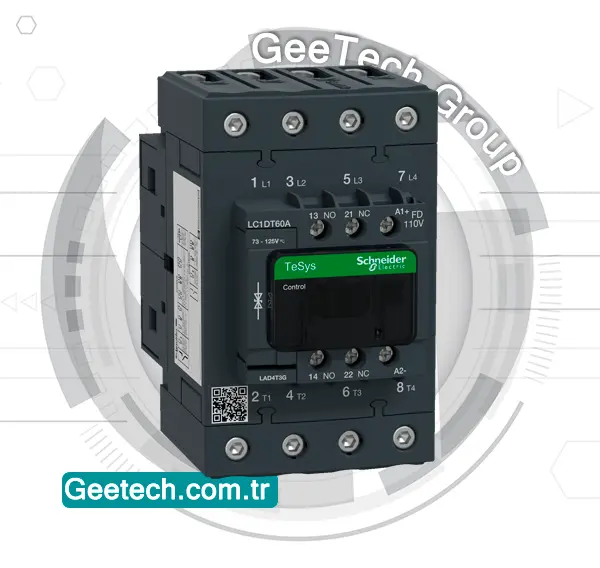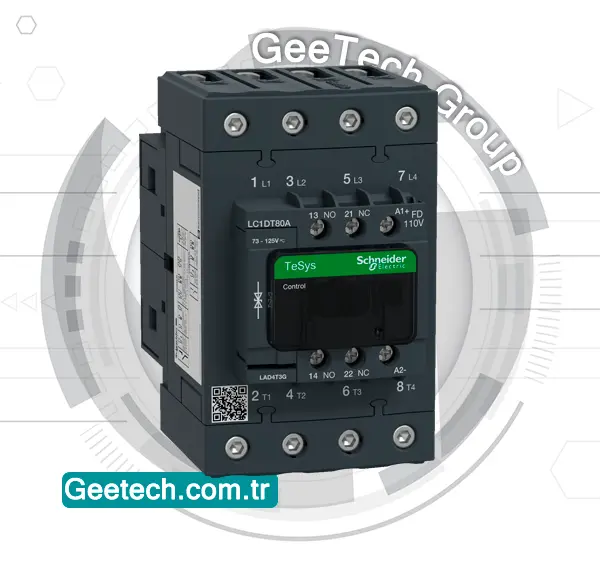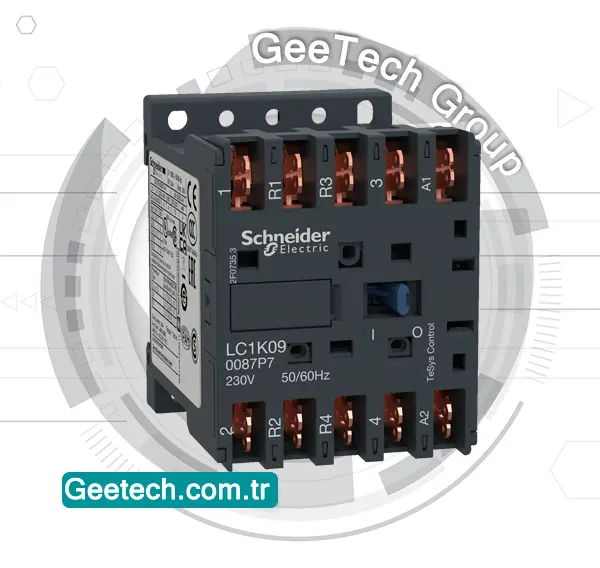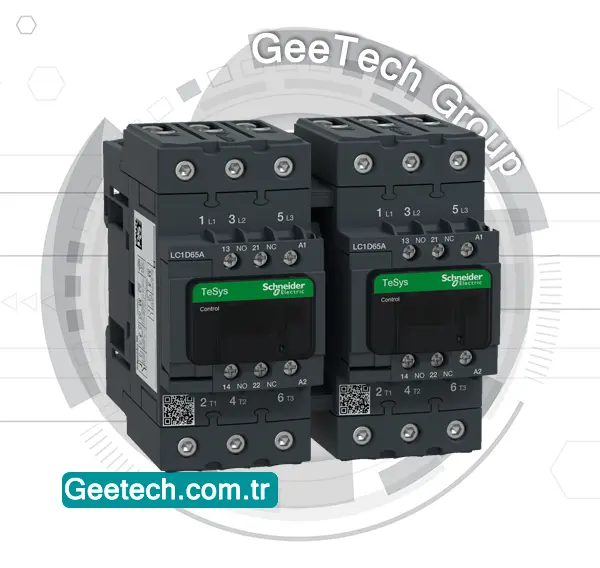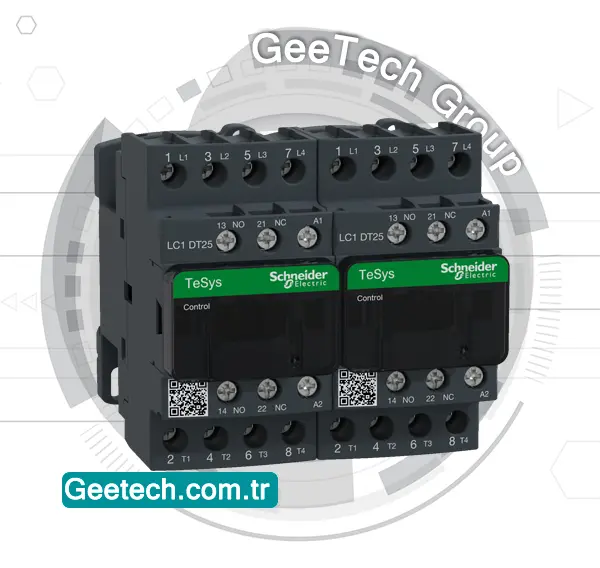Contactors and Protection Relays
A contactor is an electrical switching device, designed to control and switch power circuits, especially in motor control and lighting applications. While both contactors and relays operate in a similar way, their main difference lies in the load capacity they handle. Relays are generally used for low current or single-phase applications, whereas contactors are built for higher current ratings and are widely used in 3-phase power systems.
Unlike relays, which have a common contact connected to a neutral position, a contactor connects two poles without a common circuit. This makes contactors the preferred solution for heavy-duty electrical loads.
Schneider Electric TeSys contactors and relays are among the best-selling ranges worldwide, known for their high reliability, long mechanical life, and electrical durability. The TeSys product line is available with a complete range of accessories for motor and load control, suitable for both IEC and NEMA applications, and certified to meet major international standards.
Schneider Overload Relays
Schneider Electric offers a range of overload relays that are designed to protect electric motors and other electrical equipment from overcurrent conditions. These relays detect when the current exceeds a pre-set level for a certain amount of time, indicating an overload condition, and then trigger a trip mechanism to disconnect the power, preventing damage to the equipment.
Types of Schneider Overload Relays
Thermal Overload Relays
- LRD: Part of the TeSys D range, these relays are designed for use with contactors to provide overload protection. They offer adjustable trip settings and are typically used in motor control applications.
- LR2K: Similar to the LRD series, the LR2K thermal overload relays are used for smaller contactors and motors.
Electronic Overload Relays
- LRE: Also part of the TeSys range, these relays provide electronic protection for motors. They offer more precise settings and can include features like phase loss detection.
- LR9D: These electronic overload relays provide advanced motor protection and are often used in conjunction with TeSys D contactors. They feature adjustable protection settings and enhanced monitoring capabilities.
Schneider Electric overload relays are a critical component in ensuring the safety and longevity of electrical systems by preventing damage due to overcurrent conditions. Proper selection, installation, and maintenance of these relays are essential for optimal performance and protection.

Schneider Contactor
Schneider Electric is well-known for its extensive range of contactors, which are used for switching electrical circuits and are integral components in motor control and automation systems.
Features and Benefits:
- Wide Range of Applications: Schneider contactors can be used for various applications, from small motors to heavy industrial machinery.
- High Reliability: Known for their robust construction and reliable performance, Schneider contactors ensure long operational life.
- Compact Design: Many Schneider contactors, especially the TeSys K range, are designed to be compact, saving space in control panels.
- Easy Integration: These contactors are designed to work seamlessly with other Schneider products, such as overload relays and motor starters.
- Versatility: They support both AC and DC control circuits, providing flexibility in different electrical setups.
- Auxiliary Contacts: Many models come with auxiliary contact blocks for additional control and signaling functions.
Schneider Electric contactors are essential components for effective motor control and automation, providing robust performance, easy integration, and reliable operation across various applications. Proper selection, installation, and maintenance ensure their optimal performance and longevity.
Contactors and Protection Relays
A contactor is a specialized type of relay designed to switch electrical circuits on or off. While contactors and relays function similarly, they are distinguished by the loads they handle. Contactors are engineered for higher current carrying capacity, making them ideal for 3-phase applications. They are commonly used with electric motors and lighting systems.
In contrast, relays are suited for lower current or low voltage switching, typically used in single-phase applications. A contactor connects two poles without a common circuit, whereas a relay features a common contact that links to a neutral position.
Our TeSys product line is the best-selling range of contactors globally, known for its high reliability and long mechanical and electrical life. Choose from a comprehensive selection of accessories for motor and load control. TeSys contactors and relays cater to both NEMA and IEC applications and are certified by major standards worldwide.
3 Phase Contactor
The three-phase contactor is an essential electrical control device in modern power systems, designed to manage the switching states of three-phase AC motors. By utilizing three contactors, the operation of the motor can be precisely controlled through the opening and closing of these contactors. This makes three-phase contactors integral to efficient power system management and motor control.
2 Pole Contactor
A 2-pole contactor is a vital electrical device used to control the switching of electrical circuits, particularly in single-phase power systems. It features two contact points, allowing it to manage and switch two separate circuits simultaneously.
This type of contactor is commonly used in residential, commercial, and industrial applications to control lighting, heating, and other electrical equipment, ensuring efficient and reliable operation.
Contactor Relay
Contactors are widely used in high-power applications, including large motors, heavy machinery, and HVAC systems. In contrast, relays are typically utilized in control systems, automation, and low-power circuits due to their ability to isolate the control circuit from the load circuit, ensuring efficient and safe operation.
Reversing Contactor
A reversing contactor is an essential electrical device used to reverse the direction of motors in industrial and commercial applications. By incorporating two contactors and an interlock mechanism, a reversing contactor allows the motor to switch between forward and reverse operation efficiently. This capability is crucial for machinery that requires precise directional control, such as conveyor belts, hoists, and various automated systems.
Single Pole Contactor
Schneider Electric’s single pole contactors offer compact and cost-effective solutions for reliable electrical circuit control. These devices are engineered to manage load currents effectively, minimizing voltage drop and heat dissipation. Ideal for a wide range of single-phase applications, Schneider Electric’s single pole contactors ensure efficient and dependable operation.
Square d Contactors
schneider capacitor price list
For a comprehensive Schneider capacitor price list, expert consultation, and seamless purchasing experience, contact the dedicated team at Geetech today.
Our experts are ready to provide you with tailored solutions, competitive pricing, and unparalleled support to ensure you get the best products for your needs. Don’t miss out on optimizing your power management—reach out to Geetech now and power your future with confidence!
Conclusion
Schneider Electric’s capacitors and reactive relays are essential components for improving power quality and energy efficiency in a variety of applications. By offering reliable and advanced solutions, Schneider Electric helps customers achieve better power factor management, reduce energy costs, and maintain a stable and efficient electrical network.
Frequently Asked Questions
what is a contactor used for?
✅A contactor serves as a specialized relay designed to control the opening and closing of electrical circuits. Primarily utilized in conjunction with electric motors and lighting systems, they facilitate efficient switching operations.
Why do we need contactors?
✅A contactor is employed to safely and indirectly manage the operation of high-power electrical equipment, such as motors, fans, and pumps, by interfacing with a PLC. By using a contactor, we ensure the secure control of heavy-duty, high-voltage devices without directly connecting them to the PLC.
What is a contactor vs relay
✅Contactors excel in managing high-current loads, whereas relays are ideal for low to medium-current applications. This contrast stems from their distinct designs, with contactors boasting larger, sturdier auxiliary contacts tailored to handle elevated currents efficiently.
what is a magnetic contactor?
✅A magnetic contactor is an electromechanical device used to control the flow of electricity in an electrical circuit. It consists of a coil that, when energized, creates a magnetic field to close or open the contacts within the contactor.
Magnetic contactors are commonly used in industrial and commercial applications to switch high-power loads, such as electric motors, lighting systems, heating elements, and other electrical equipment. They are known for their reliability, durability, and ability to handle high currents, making them essential components in various electrical control systems.
what is auxiliary contactor?
✅Auxiliary contactors are additional sets of contacts added to a primary contactor to perform auxiliary functions within an electrical control system. These contacts are typically used to provide feedback or signaling, monitor the status of the main contacts, or control auxiliary devices such as indicator lights, timers, or interlocks.
Auxiliary contactors are commonly found in industrial control panels, motor control centers, and other electrical equipment where precise control and monitoring of circuits are necessary. They play a crucial role in enhancing the functionality and safety of electrical systems by providing additional control and feedback options.



















